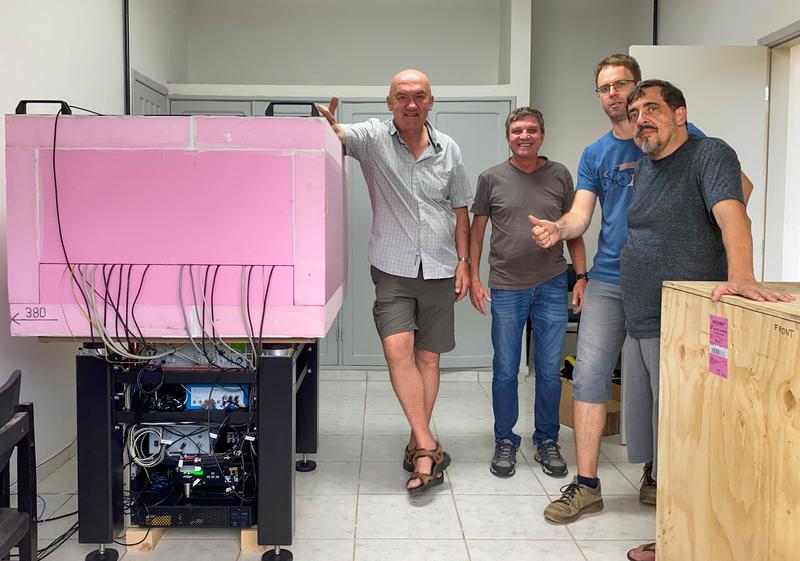New Measurement Station in Brazil: Quantum Technology from Jena Expands Global Network in Search for Dark Matter
A highly sensitive quantum sensor from Jena has traveled nearly 9,000 kilometers: by truck to Hamburg, by ship across the Atlantic, and finally overland to Vassouras, Brazil. At the campus of the Observatório Nacional, researchers from the Leibniz Institute of Photonic Technology (Leibniz-IPHT) in Jena, together with Brazilian partners, have installed a new measurement station. It is part of the worldwide GNOME project and is designed to help address one of the great unsolved questions in modern physics: the nature of dark matter.
Dark matter cannot be directly detected with conventional measurement methods. However, it demonstrably influences the motion of galaxies and the structure of the cosmos. Understanding its nature remains one of the central open problems in physics. The international GNOME collaboration (Global Network of Optical Magnetometers for Exotic physics searches) specifically looks for signs of hypothetical particles—among them so-called axions—that might interact with atoms inside magnetometers.
“Our station is based on an optically pumped magnetometer, in which we use laser light to drive cesium atoms into specific quantum states,” explains Dr. Theo Scholtes, physicist at Leibniz-IPHT. “If this state changes—for example, due to a passing dark-matter field—we can measure it with high precision.”
The sensor’s technology—including magnetic shielding, laser stabilization, and system control—was developed, built, and tested at Leibniz-IPHT in Jena. The project was funded through the German Research Foundation (DFG) initiative “RioGNOME.”
First Measurement Station in the Southern Hemisphere
The new GNOME station in Brazil is the first permanently operating station of the network in the Southern Hemisphere. This geographical expansion is of particular significance for the project. “With the station in Vassouras, we improve our ability to triangulate potential events—that is, to determine their origin more precisely by comparing signals from multiple stations. The principle is similar to how gravitational waves are detected,” says Theo Scholtes.
Wissenschaftlicher Ansprechpartner:
Dr. Theo Scholtes
Leibniz Institute of Photonic Technology (Leibniz IPHT)
Head of the Quantum Magnetometry Research Group
+49 3641 206166
theo.scholtes@leibniz-ipht.de
Originalpublikation:
https://doi.org/10.1002/andp.202400359 Afach, S., et al. „What Can a GNOME Do? Search Targets for the Global Network of Optical Magnetometers for Exotic Physics Searches.“ Annalen der Physik 2400359 (2025).
Weitere Informationen:
https://budker.uni-mainz.de/gnome/ Website The GNOME Experiment
https://www.leibniz-ipht.de/en/on-the-trail-of-dark-matter-a-quantum-sensor-from-jena-begins-measurements-in-brazil/ More detailed article on the Leibniz IPHT website
Ähnliche Pressemitteilungen im idw



